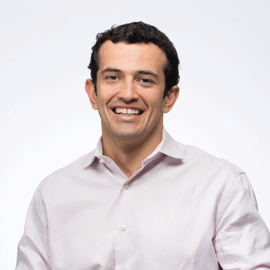Diego Ibarra

My mission is twofold: Apply today’s highest, most reliable technology to determine the best investment decisions in building performance, and keep working on what’s next and next and next…
For the last 30 years, development has been focused on making modeling and other computer tools fast enough to give you an answer within a week, then a day or a few minutes; on validating the algorithms to make sure the answers are correct; and on developing graphic user interfaces and so on.
Today, tremendous research is taking the tools to a whole new level to advance the state of the art in building performance—including creating models that predict or reflect actual performance in order to test potential improvements or to calibrate design assumptions.
Until now, however, the efforts have been very disconnected in several senses. For one, people doing high-end research are very rarely connected either to the CFO and other management of an investment fund or the real estate holder, or to the consultants who advise owners on improving building performance.
Second, researchers tend to pursue relatively narrow investigations, or to focus on answering just a couple of questions, usually very specific to, say, an HVAC engineer or the architect.
Now is the time to merge all of these technologies together and get the full value out of that conjunction. After all, the point is to enable the owner to get sufficient, timely information to make the best investment decision—the one that delivers the optimal economic/environmental return.
In recent years, I’ve been working at Harvard University on the next generation of modeling to predict the actual performance of a building—daylighting, energy, natural ventilation potential, etc. My ECON colleagues have been equally immersed in their fields of expertise—economics, sustainability, and operations.
Because of this, we are very tied-in to high-end research across a broad spectrum. Consequently, we understand all of the latest work that proves the best and most cost-effective way to do things, and the resulting impact. We know the most effective way to get to the answer so we can make better use of the client’s money and achieve success at the lowest cost.
Beyond that, we also thoroughly know the fundamentals of modeling, building operations, and BMS and control systems. So we know where and how to save time and money. You can’t “just do it;” you need to spend time on the critical areas that have a lot of potential for savings, and make the process more effective and efficient in other areas.
With a deep knowledge of the fundamentals and the technologies, we’re able to do that and guarantee the quality of the outcome. Normally that is not the case, because the worlds of predictive control, modeling and sustainability are disconnected from each other and from the business goals of a given owner or company. We’re changing that.
